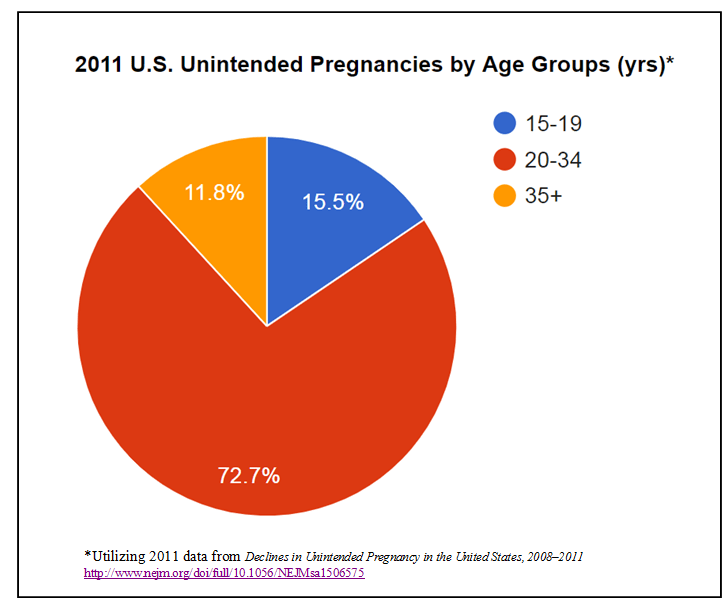File: Download
Author(s): Mary Harte
Averting environmental and social costs
Envision any woman – or man – in the United States being able to walk into their local pharmacy, clinic, or other venue, and walk out with highly effective contraceptives that allow them choice in whether they have a child in the next five years, without further effort on their part. The gains for them, and the United States, would be huge, both socially and economically, by avoiding significant longterm economic and environmental costs of unintended pregnancies.
Unintended pregnancies in the US generate large economic costs, both environmental and social. A recent study noted that having one fewer child in a family saves nearly 60 tonnes of climate-changing carbon dioxide equivalent pollution annually. Although the Green New Deal outlines what can be done on a national scale technologically, at an individual level, having one fewer child is by far the best green deal a person can make for the future of humanity.
What about the social costs? This includes generating or maintaining poverty. About 60% of all U.S. adults have less than $1000 for addressing unintended costs. A 2016 National Institute of Health demographic analysis indicates that low income, relatively uneducated women between 20 and 34 years of age are most vulnerable to unplanned pregnancies in the U.S. The average annual cost of raising a child in the U.S. is roughly $23,400, excluding college.
Combined, these factors indicate that having an unplanned child could tip many U.S. families into poverty, and thus represents the potential for enormous unintended economic problems in many U.S. families.
How costly are unintended pregnancies to the U.S. economy? Consider just expenses related to unintended pregnancy and resulting birth. A 2011 study indicates that the annual birthing expenses alone from unintended pregnancies in 2006 cost US taxpayers roughly $10 billion: 50% of publically funded births resulted from unintended pregnancies. Another 2011 study estimated the annual cost of U.S. unintended pregnancies ranged from $10-13 billion.
But these studies do not factor in the many longterm social costs. What happens when that unplanned child grows up, more often than not in poverty? A poor person is likely to generate more social costs than her richer peers, connected to health, violence, and criminal problems stemming from inadequate diet, care, resources, and living environment.
From another social perspective, that of women’s civil rights, equity, and social justice, women lack a basic freedom, the right to control their own reproduction, when they lack access to highly effective family planning services. Unintended pregnancies can be costly, and the resulting births unfairly hinder the access of women to educational and economic improvement, especially if they are unmarried, compared to the men that impregnate them.
These are just some of the social and environmental costs generated by unintended pregnancies, but they show that U.S. unintended pregnancies generate high and ever increasing social and environmental costs.This should be a strong motivation to dramatically reduce them. Integral to developing that motivation is educating the public on the enormity of the problem and its ramifications.
In giving women and mean what they want and need – the freedom to control their reproduction – a step is taken towards creating a sustainable population within the U.S. population, versus the current reality, where about 5% of the world’s population consumes 25% of world’s fossil fuel resources annually.
The Green New Deal recently espoused technological clean energy solutions to combat climate-changing pollution, fueled by human consumption, but does not address the unsustainable numbers of human beings that also fuel the magnitude of that consumption, and undermine the deal’s goals.
Conversely, helping individuals avert an unintended birth empowers them to participate viscerally in a personal Green New Deal, which can encourage more support for the broader, proposed national legislation.
Reducing unintended pregnancies is an important first step that can help achieve many of those goals, and Congress can help by creating federal legislation that would enable universal free access to highly effective family planning services and information.
The Payoffs of Legislation
Public investing in family planning has already been been shown to have huge economic payoffs: a 2014 Guttmacher Institute analysis shows for every dollar invested, seven dollars in savings are generated. A 2007 National Health Institute study showed how California saved over 1.5 billion dollars from a single year of averting unplanned pregnancies. Besides avoiding the enormous long term social costs cited above that stem from social and environmental effects, the U.S. would be saving 5-6 billion taxpayer dollars annually in pregnancy and birth costs.
More specifically, recent studies in Missouri and Delaware show that free access to highly effective family planning dramatically decreases unintended pregnancies. The Missouri study also showed a dramatic decline in abortions. Decreasing the demand for abortions is a goal and rare point of agreement for almost every U.S. voter on this otherwise highly divisive and politicized issue.
Recent cultural and political shifts have made the goal of legislating free universal access to family planning more accessible. The Me Too movement has spurred a recognition among women of existing gaps in their sexual rights, which include reproductive ones. Politically, this has resulted in far more women elected to Congress, increasing the number of legislators aware of the many benefits afforded from easy universal access to family planning.
In addition to women, legislative sponsors of preventing unintended pregnancies can tap into other sources of political support. Studies already show the huge economic benefits and savings, something dear to fiscal conservatives. For pro lifers, decreasing the demands for abortions is far easier than trying to constrict access. U.S. voters overwhelmingly support family planning, a service that most families want and value. All this political support indicates that legislators could build the political consensus needed to pass effective legislation.
Furthermore, many recent positive developments are making universal access to highly effective family planning an increasingly easier, cheaper, and more achievable goal. These include:
- the development of highly effective and increasingly cheaper Long Acting Reversible Contraceptives (LARCs, in the form of modern IUDs and implants), which have already lowered unintended pregnancies among teenagers; this game changer has refocused much of U.S. family planning services on promoting LARCs and increasing their accessibility.
- the growing development of family planning outreach and distribution networks within many states, eg: In California, the Family Pact network is now training providers to administer LARCs; The Colorado Family Planning Initiative emphasized LARC use, resulting in statewide savings as both abortions and unintended pregnancies decrease; the similar Iowa Initiative To Reduce Unintended Pregnancies demonstrated a reduction in unintended pregnancies via increased access to LARCs; Delaware partnered in 2016 with Upstream (below) to provide low/no cost LARCs to 200,000 women on a same day, one visit basis.
- the development of U.S. ancillary organizations to facilitate family planning outreach and distribution, e.g.: Medicines360 is the first non-profit pharmaceutical company devoted to producing LARCs; Upstream works specifically with health centers in many states to remove barriers preventing women from getting the birth control method of her choice; Population Media Center has demonstrated success within the U.S. and internationally in educating various cultures about family planning via stories that entertain and Power To Decide, a campaign to prevent unplanned U.S. pregnancies, works to identify and promote state policy options that will increase information about and access to contraception.
- the expansion of Medicaid in 34 states to poor or nearly poor childless adults; 3 more states will be doing so at an as yet undetermined date. Medicaid lists family planning as a “mandatory” benefit, although states have wide discretion on how to exercise that mandate, including changes that place hurdles to coverage. Of the remaining 13 states, 11 have either funded state programs (Texas and Missouri), state plan amendments, or a Medicaid family planning waiver that covers family planning services for women. Tennessee and Kansas have none of these.
How have these developments impacted the rate of unintended pregnancies since 2010? There are no data to answer this question. We do know that all states are experiencing declining teen births, and that each prevented unintended pregnancy is saving its state and nation money.
There has been much public focus on preventing teenage pregnancies, but that is not the biggest age group vulnerable to unintended pregnancies, according to existing data.

But further action and changes are needed, beyond the gathering of relevant data, to address less obvious factors that undermine the prevention of unintended pregnancies in the U.S. These include:
- recognizing and targeting the largest demographic group (73%) of women shown to be most vulnerable to unintended pregnancies: poor, relatively uneducated women, 20 to 34 years of age.
- effective outreach to this demographic is necessary but can be particularly challenging, because the poor face unique economic and physical hurdles to accessing effective family planning services.
- targeting within this demographic the many women who are likely undocumented, which makes them ineligible for Medicaid, and especially challenging for outreach; it also hinders them from preventing unintended pregnancies. This lapse arguably costs the U.S. many millions annually. Helping this group especially, therefore, is in the best national interests.
Given the above, it is clear that we need legislation at a federal level that can:
- increase outreach and access to highly effective family planning information and services for those women most vulnerable to unintended pregnancies;
- help states create or improve distribution networks for convenient, highly effective family planning services;
- ultimately create a standardized process for ensuring equal, universal and free access to highly effective contraceptives for all women in the U.S.
Effective marketing campaigns to both reach out to women in need of highly effective contraceptives and to educate constituencies on the important benefits of this goal will be vital for success. Universal free access to highly effective family planning services is a multi-win economically, socially, culturally and politically.
The views and opinions expressed through the MAHB Website are those of the contributing authors and do not necessarily reflect an official position of the MAHB. The MAHB aims to share a range of perspectives and welcomes the discussions that they prompt.

